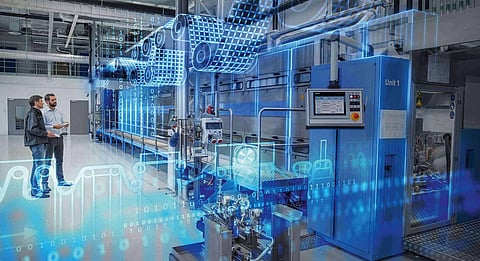

The urge for continuous advancements in the logistic industry has opened new doors for disruption. One of the major breakthrough technologies that are making a big change in logistics is digital twin. According to a DHL trend report, the concept and rise of digital twins can create value in the sector.
Digital twin is a virtual model of a real thing. It stimulates both the physical state and behaviour of the thing. A digital twin stands as a bridge between physical assets and digital models by using sensors to gather real-time data from vehicles, aircrafts engines, buildings, etc. According to a report, the global digital twin market is valued at US$ 3.1 billion in 2020 and is anticipated to grow to US$48.2 billion by 2026 with a CAGR of 58% during the forecast period. For many years, scientists and engineers have created mathematical models of real-world objects. Over time, these models have become increasingly sophisticated. The current technological growth has made it possible to link offline physical assets to digital models. The insight derived from the model allows decisions to be made about the physical object, which can also be controlled by unprecedented precision.
The digital twin concept has been around since the beginning of the 21st century. The technology is now slowly making its way into logistics. Applying digital twin in logistics will help bring deeper insights into the planning, designing, operations and optimization of the supply chain network individually or globally.
A recent report unraveled that the total weight of non-living things in the world is expected to overthrow the weight of all living beings combined in 2020 or 2021. This shows the increasing usage of material substance by humans. The e-commerce market accounts for US$3.5 trillion per year. A direct consequence that it caused is the spike in non-recyclable packing material. Henceforth, both consumers and online sellers are looking for a biodegradable solution. As more companies look for ways to make their operations efficient and sustainable, digital twin technology may be the answer that could solve these problems. Packing materials have the opportunity to be revolutionized through digital twins. By using digital twins of the compostable plastics, recycled materials and biodegradable packaging, companies can model the material's behaviour under different weight capacities, temperatures, vibration and shock loads.
The industry that needs digitisation and any possible makeover is supply chain in logistics. In a world where people expect companies to ensure product quality and needs real-time navigation of their packages, supply chain must become more trustworthy. Digital twin is a handy solution that enables logistics providers and other supply chain enterprises to offer increased transparency to people involved. With greater transparency in supply chain, partners can easily recognize inefficiencies and work together to improve processes and streamline operations.
Getting a digital twin of warehouses and distribution centres could have a significant impact on the design, operation and optimisation of logistics infrastructure. The digital twins act as 3D models of the facility with upgraded technology to view movements and packaging works done inside an enclosed place. Warehouse digital twin can support the design and layout of facilities, allowing companies to optimise space utilisation and simulate the movement of products, personnel, and material handling equipment.
Join our WhatsApp Channel to get the latest news, exclusives and videos on WhatsApp
_____________
Disclaimer: Analytics Insight does not provide financial advice or guidance. Also note that the cryptocurrencies mentioned/listed on the website could potentially be scams, i.e. designed to induce you to invest financial resources that may be lost forever and not be recoverable once investments are made. You are responsible for conducting your own research (DYOR) before making any investments. Read more here.
